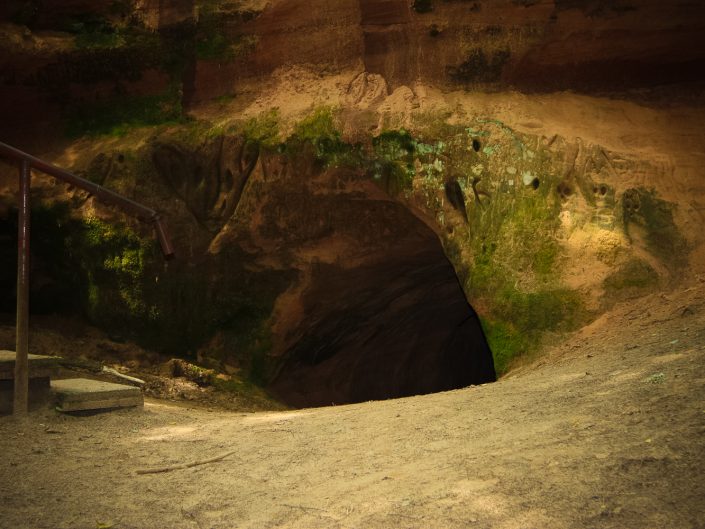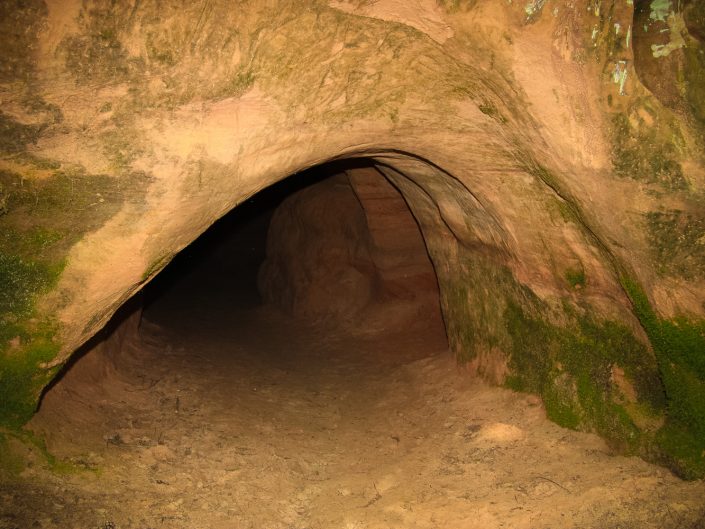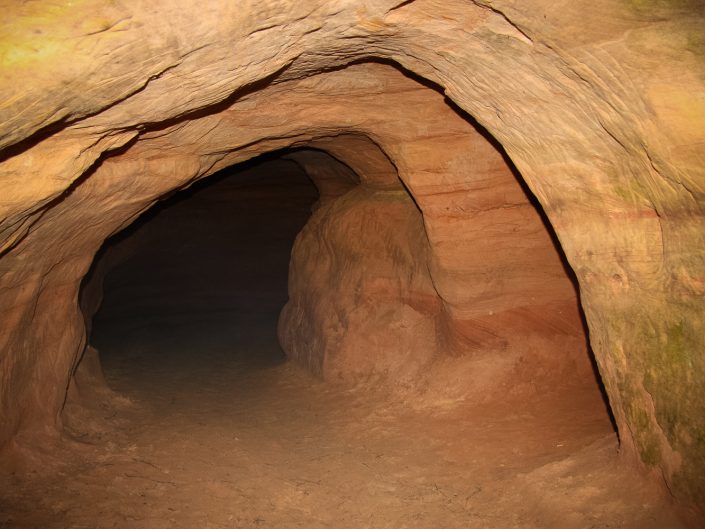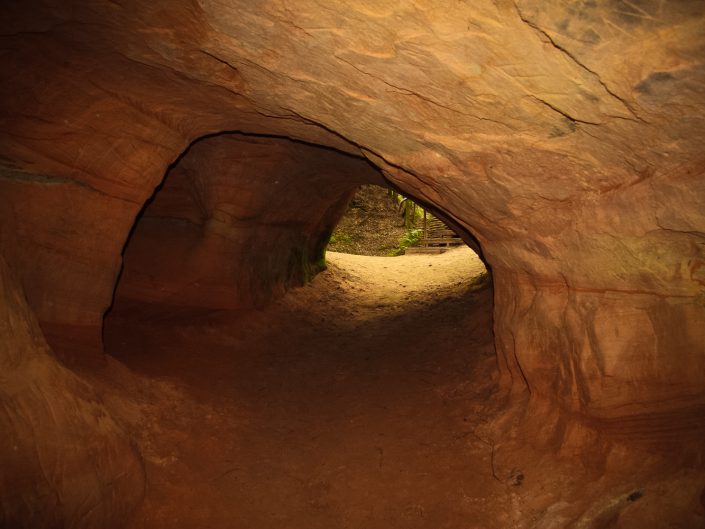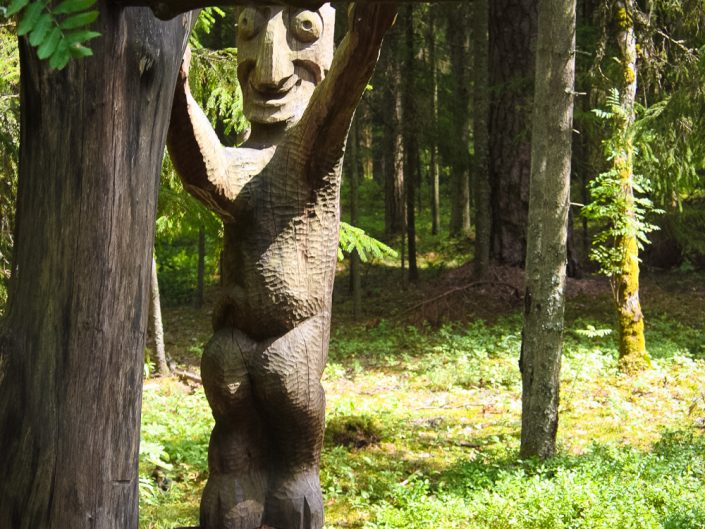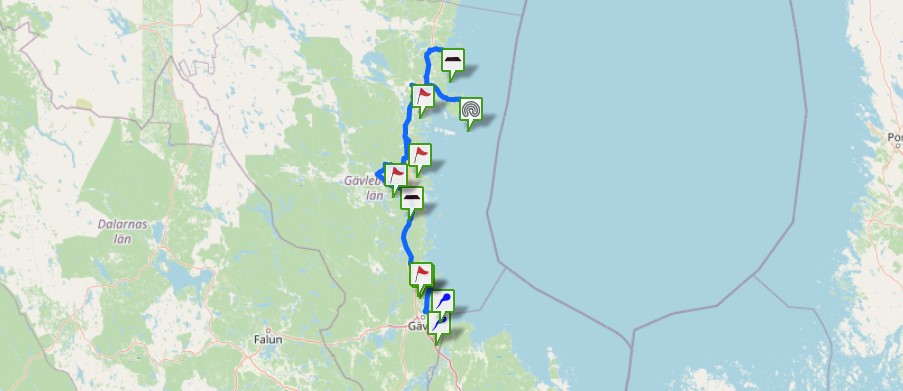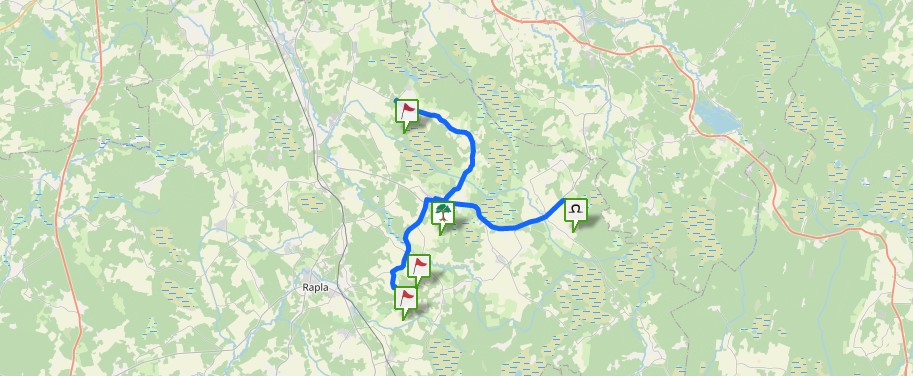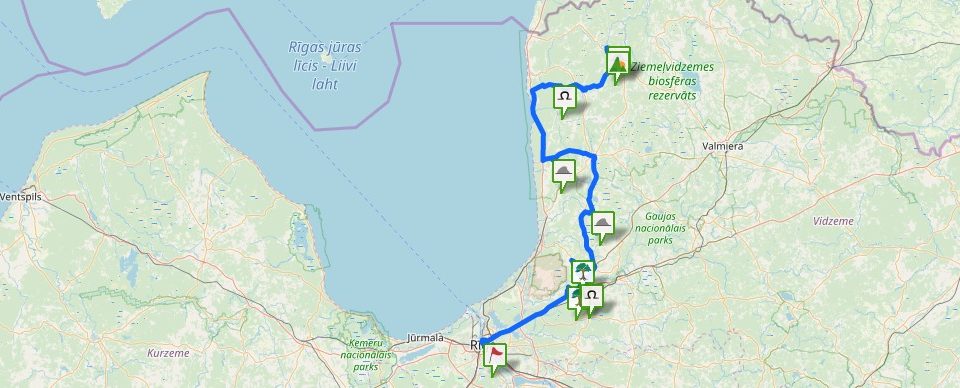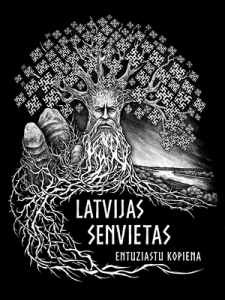State archaeological heritage (State Inspection for Heritage Protection, No 2466). The most remarkable cave within the territory of the Skaņākalns Nature Park. There are many tales about the cave and its surroundings related to the Devil and his activities — that the cave used to be his dwelling place, that the cave is the Devil’s head itself when beheaded by a brave man. The cave is 16 m long, 3–4 m high. Its space reaches 70 m2. (I. Mitāne. Mazsalaca. Guidebook. (Mazsalaca. Ceļvedis). – Rīga, Jumava, 2008) When making test excavations, a bonfire place marked with stones was uncovered, no other specific findings. (J. Urtāns, Institute of History of the Academy of Sciences of LSSR, 1986) Other nearby objects: Skaņākalns Nature Park, Mazsalaca.
There are many tales about the Devil’s Cellar (Mazsalaca Devil’s Cave). One of the tales is as follows, “About 2 versts further along the road that leads to the Skaņokalns Hill, which is remarkable for its echo, the Devil’s Cave is situated where since time immemorial the Devil dwelled. Not far from the cave, on the bank of the Salaca, in the cliff there is a protrusion from which the Devil preached on Sundays, that is why this place is called the Devil’s Pulpit (Velna kancele). Between the Devil’s Cave and the Devil’s Pulpit, at the Salaca, a spring flows out of a cliff, the water of which is very clear, cool and tasty. Here the Devil who was dwelling in the cave slaked his thirst, that is why this spring is called the Devil’s Souring Churn.” (1978, 3209, in Mazsalaca of Valmiera, recorded by J. Meisters 1966; compiled by I. Ruberte. Valmiera County Tales (Valmieras novada teikas). 1999) Another tale narrates, “In ancient times, it was many years ago, in the surroundings of the nowadays Mazsalaca the Devil appeared. He tortured people and animals. Finally a brave man stood up who was ready to fight against the Devil. He took an axe and went looking for him. Soon he met the Devil. The brave man started to flee and when the Devil caught up with him, he turned around and beheaded the Devil. The head opened its mouth and fell on the ground making a deep pit and rolling to the side of the pit. The head soon turned into ground. And the present Devil’s Cave is the former Devil’s Mouth.” (1978, 2626. M. Luste in Mazsalaca 1966; compiled by I. Ruberte. Valmiera County Tales (Valmieras novada teikas). 1999.) (For more information see: S. Laime, 2009)
